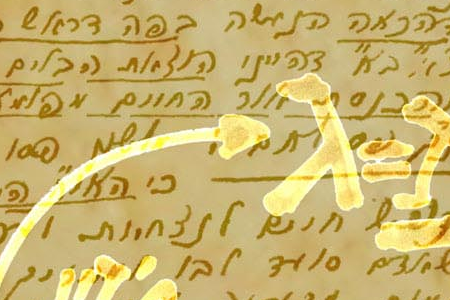
Every one of us consists of two contrasting qualities: darkness and light, evening and morning. These states represent our spiritual ascents and descents. The entry into spirituality is found in between them.
Understanding “Day-Night” in Its Spiritual Meaning
When the notions of “day-night” and “morning- evening” are mentioned in Genesis, know that they refer to your changing states. The goal in spiritual progress is to find ways to keep the descents short-lived, and swiftly shift to the next phase—one of ascent, of morning.
The secret of good and bad states can be defined by proximity to the Creator: when I am close to His quality of Love, I enjoy a state of ascent, and feel good. The farther I am from this Law, the more I suffer a state of descent, and feel bad.
Although I always look to attribute my despair to corporeal factors, these justifications are false. The situation appears that way to me from my uncorrected state, when the root—the force that’s really pulling the strings—is concealed from me. Thus, I find myself immersed in my “I,” in my egoism, instead of trying with all my might to come out of it.
The truth is that no matter how hard I try, I am powerless to escape. However, this fervent striving is what leads me to the true prayer, found not in the mind but in the heart. This is precisely the prayer the Creator wants from me, one that He answers instantly and without fail.
Prayer as a Demand from the Heart
A “prayer” is a plea, a demand that is born in my heart. It is “inscribed” in it, rather than read in a prayer book. A prayer is my desperate plea for help, for deliverance, an appeal to the Creator, not to abandon me to the bondage of egoism.
When does such a prayer arise? Only when I come to realize that I cannot escape the ego’s deadly grip by myself.
That is precisely the prayer that the Torah teaches me. It tells me that all these states are necessary for the development of my soul. I cannot feel an ascent if I haven’t experienced descent. Hence, together they comprise the whole spiritual desire; together they are “evening and morning,” descent and ascent which unite into “one day.”
Recognition of Evil Leading to Spirituality
The separation of “heaven” and “Earth”—light thoughts from dark thoughts—is called the “recognition of evil.” It is a state where you clearly realize that within you lies evil that must be corrected, or you will never reach the spiritual world. And if the desire to obtain the spiritual world lives within your heart, haunting you, you will do whatever it takes to cleanse yourself of this evil. However, your first step is to expose and recognize the evil within.
Recognition of evil happens by studying Kabbalah books written by Kabbalists at high spiritual levels. These books contain a special luminescence that you invariably draw by trying to understand the meaning of the texts. Shortly into the study, you begin to feel how opposite you are from this luminescence, which represents selfless love and bestowal.
You want to merge with the Light. You make that your goal, you know that it’s possible, but how do you cleanse yourself and become similar to the Light?!
If you continue to apply to yourself all that these books speak of, if you try to realize that they are written for you and about you, you will feel the world around you beginning to change.
This path is fraught with inevitable states of descent. But gradually you will learn how to analyze which of your qualities pertains to the spiritual, and which to the animal. Your recognition of evil will grow until it becomes absolute. That will be the real breakthrough into the spiritual dimension, when you will be granted a remedy.
 “What Is the Recognition of Evil?” is based on the book, The Secrets of the Eternal Book: The Meaning of the Stories of the Pentateuch by Semion Vinokur.
“What Is the Recognition of Evil?” is based on the book, The Secrets of the Eternal Book: The Meaning of the Stories of the Pentateuch by Semion Vinokur.

when we attain the property of bina we revile and sense how evil we are in compering with the property of bestowal,,,